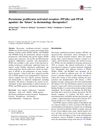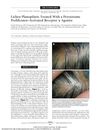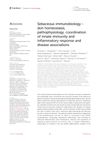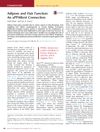Lichen Planopilaris: Mechanisms, Subtypes, and Diagnosis
September 2021
in “
CRC Press eBooks
”
lichen planopilaris cicatricial alopecia peroxisome proliferator-activated receptor PPAR pilosebaceous unit CD-8+ T-cell apoptosis epithelial follicular stem cells eHFSCs epithelial mesenchymal transition frontal fibrosing alopecia FFA trichoscopy follicular openings peripilar casts linear blood vessels tufts of hairs blue-gray dots white dots milky white areas LPP scarring alopecia hair follicle unit immune cells cell death stem cells hair transplant hair loss patterns hair examination hair follicles hair casts blood vessels hair tufts skin dots white areas
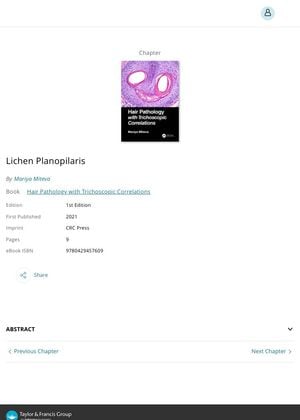
TLDR Lichen planopilaris causes permanent hair loss and scarring due to damage to hair follicles and can be mistaken for other hair loss conditions.
Lichen planopilaris (LPP) is a primary lymphocytic cicatricial alopecia characterized by irreversible hair loss and scarring. It involves several mechanisms such as deficient peroxisome proliferator-activated receptor (PPAR), destruction of the pilosebaceous unit, CD-8+ T-cell-induced apoptosis of the epithelial follicular stem cells (eHFSCs), and epithelial mesenchymal transition of the surviving follicular eHFSCs. There are several subtypes of LPP including patchy, diffuse, patterned or fibrosing alopecia in a pattern distribution (FAPD), linear LPP, and Graham-Little-Picardi-Lasseur syndrome. LPP can also occur in children and is often misdiagnosed as alopecia areata or tinea capitis. It can be associated with frontal fibrosing alopecia (FFA) in 16–21% of the cases. LPP can be underdiagnosed prior to hair transplant if not biopsied, which could lead to loss of the follicular grafts after hair transplant. On trichoscopy, there are loss of follicular openings, peripilar casts, elongated linear blood vessels, tufts of hairs, blue-gray dots in a target pattern, white dots, and milky white areas.

